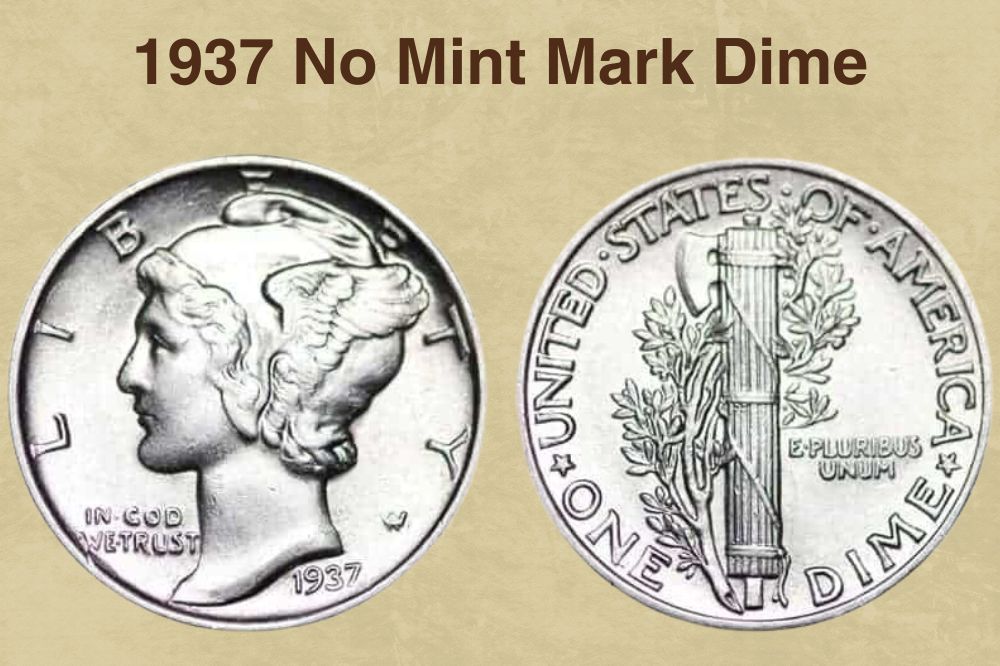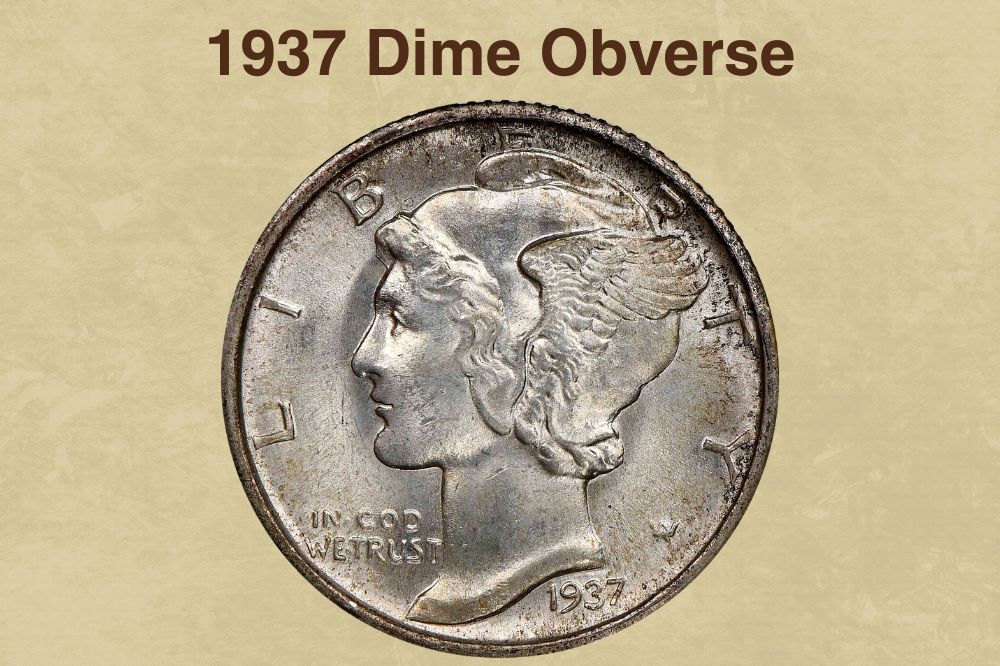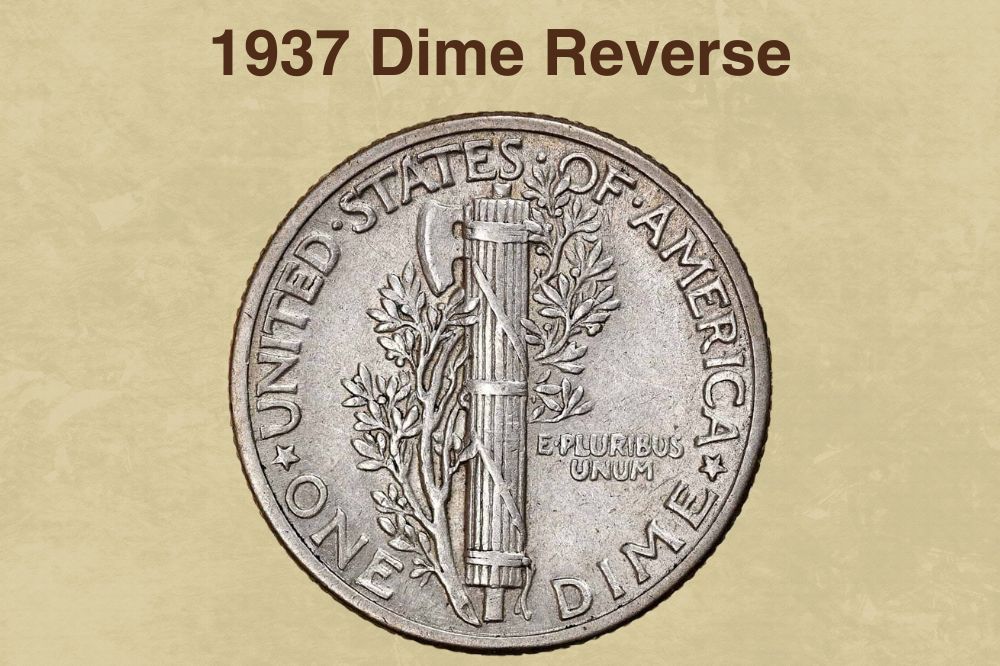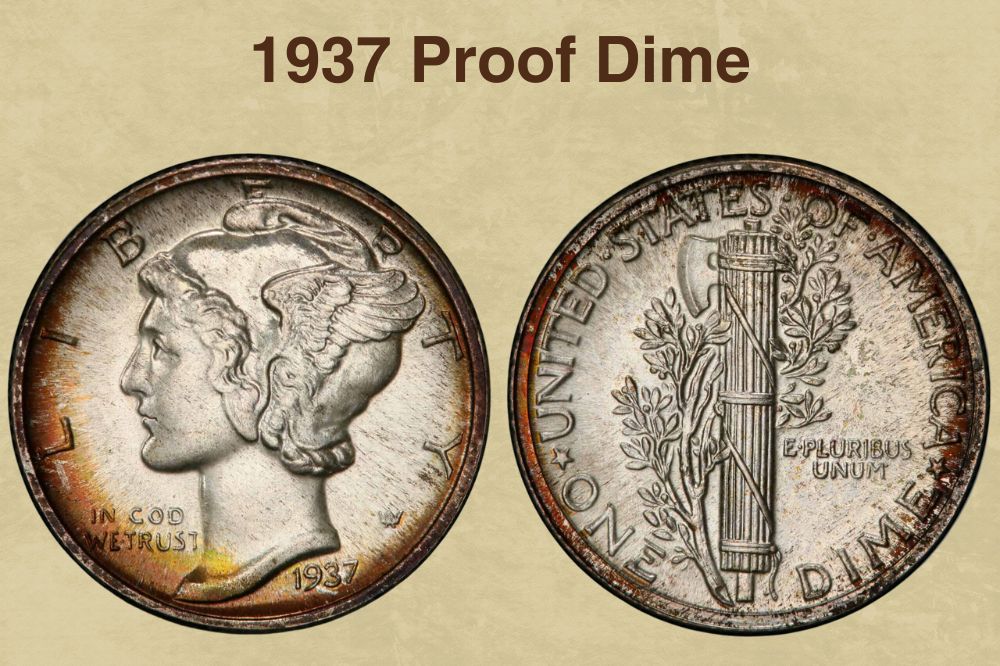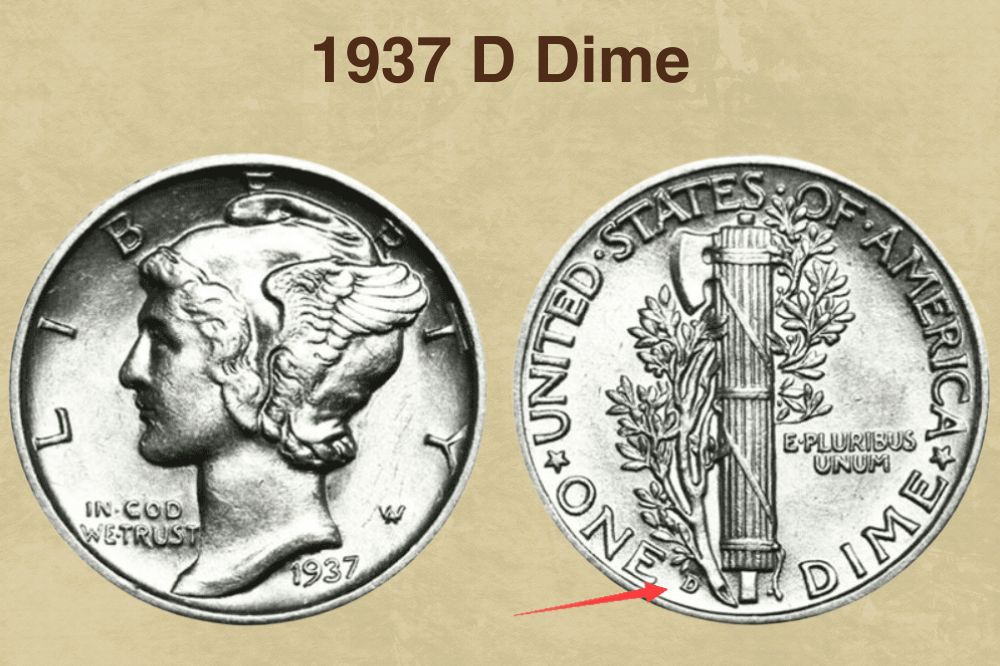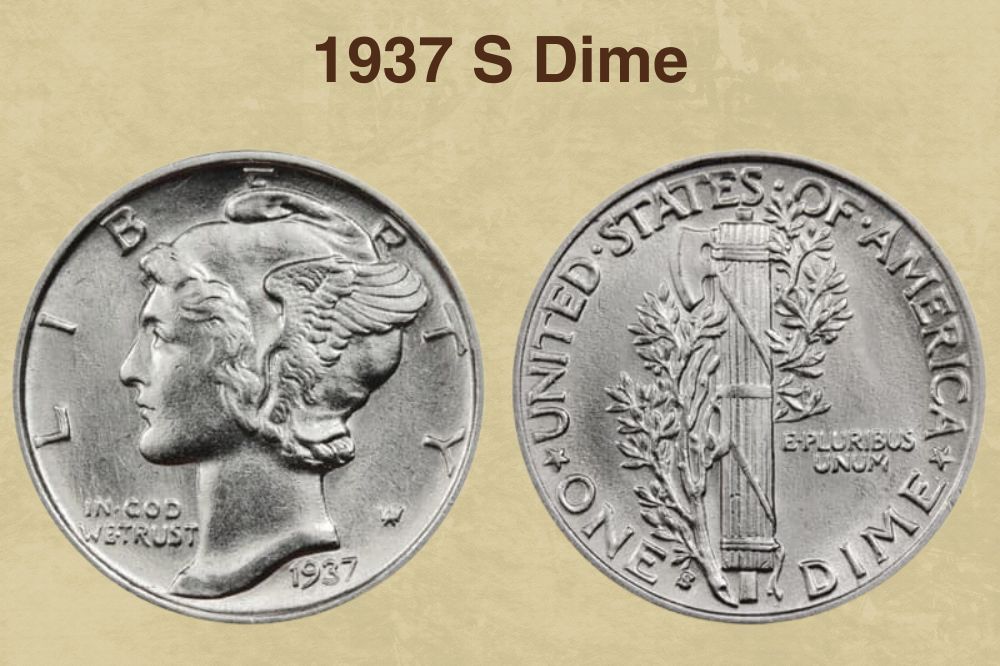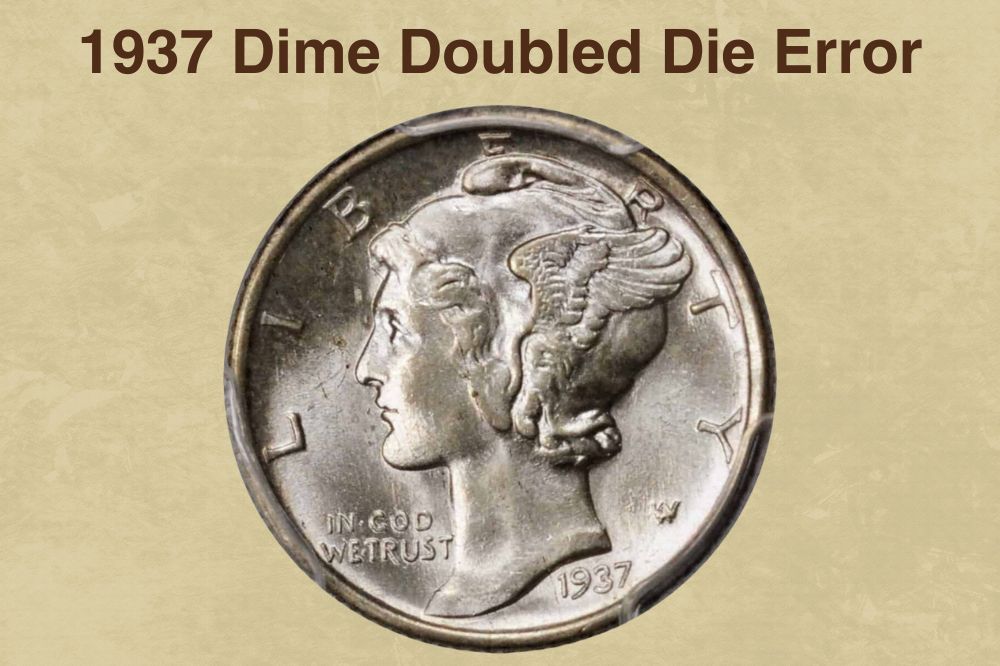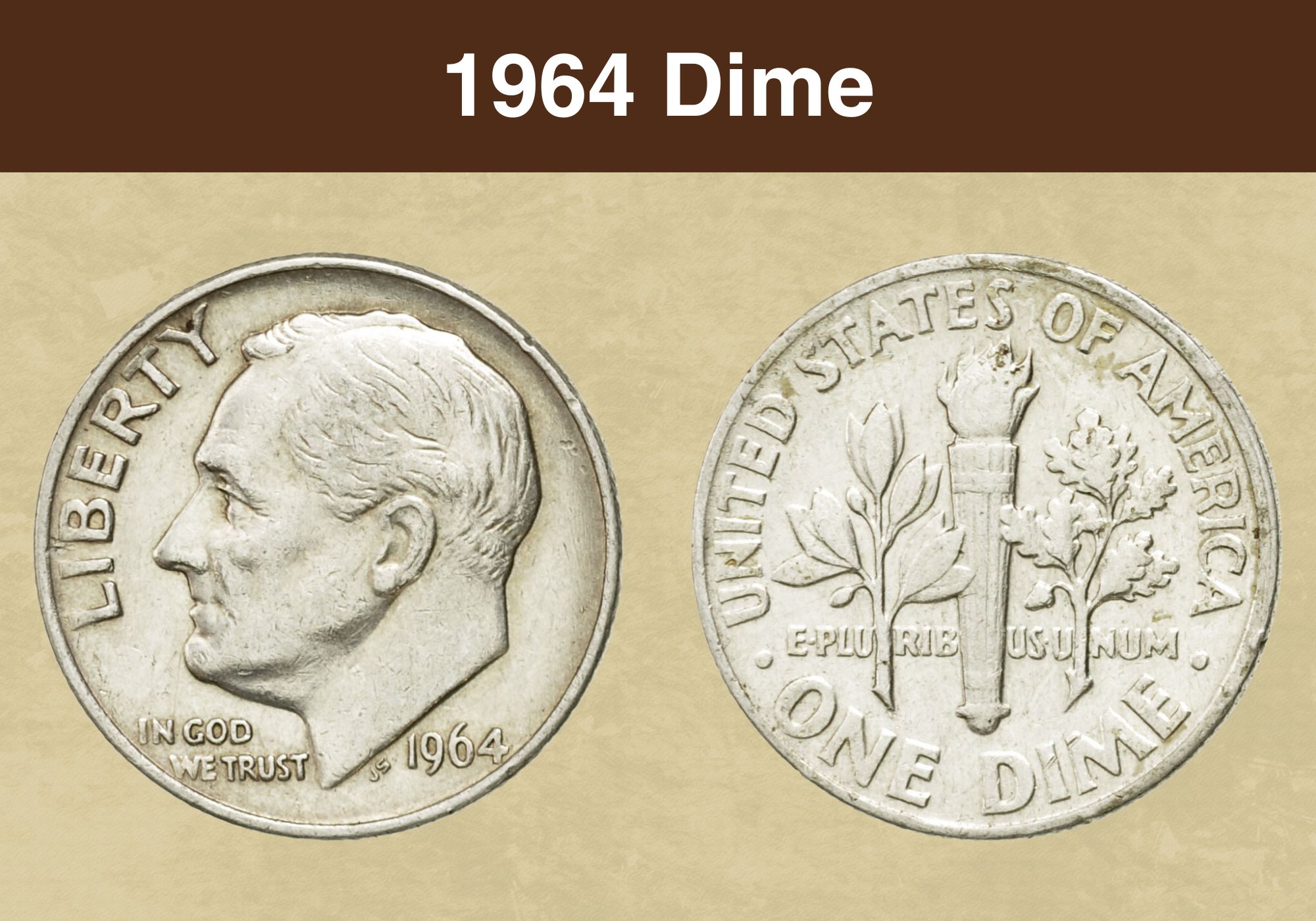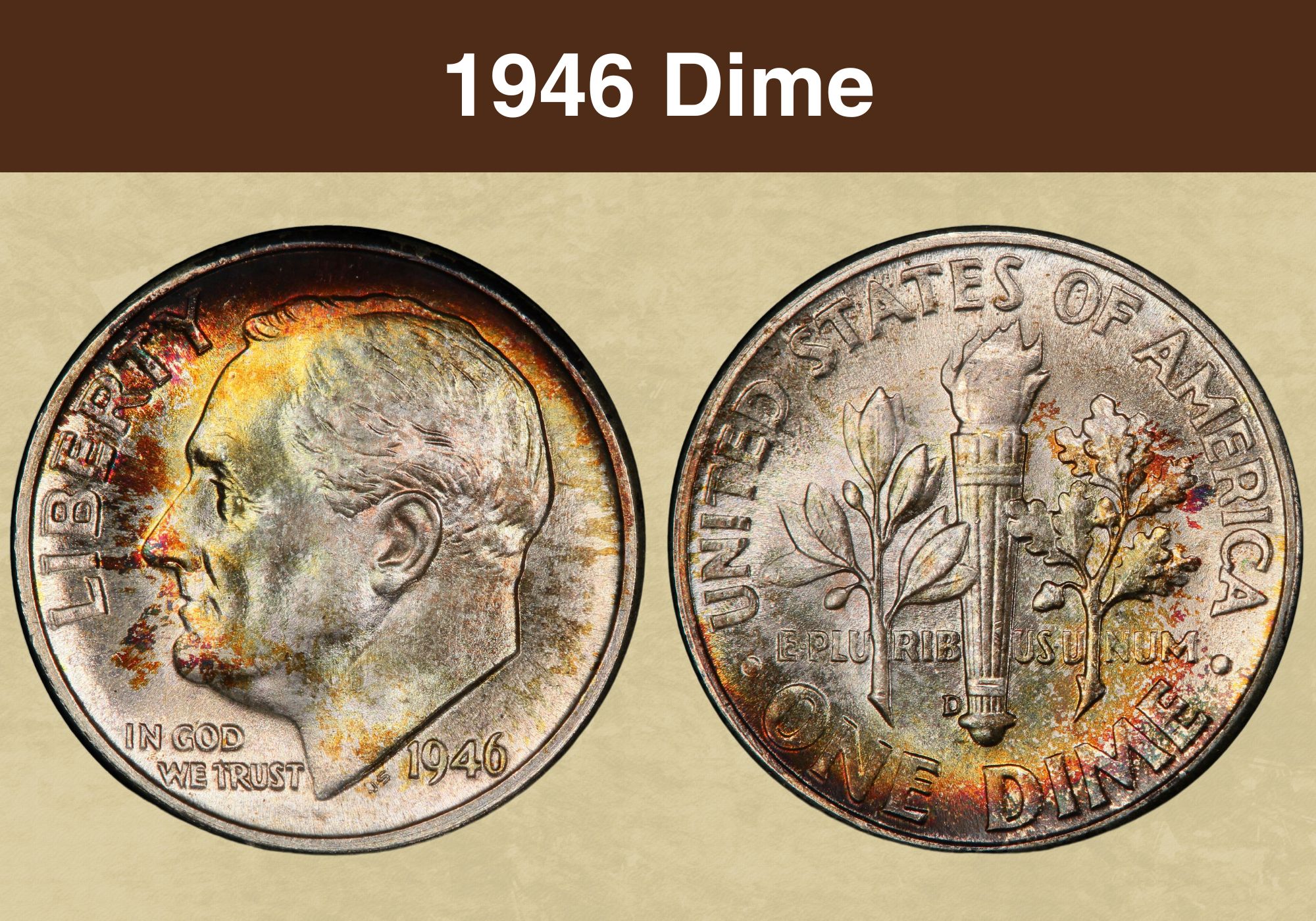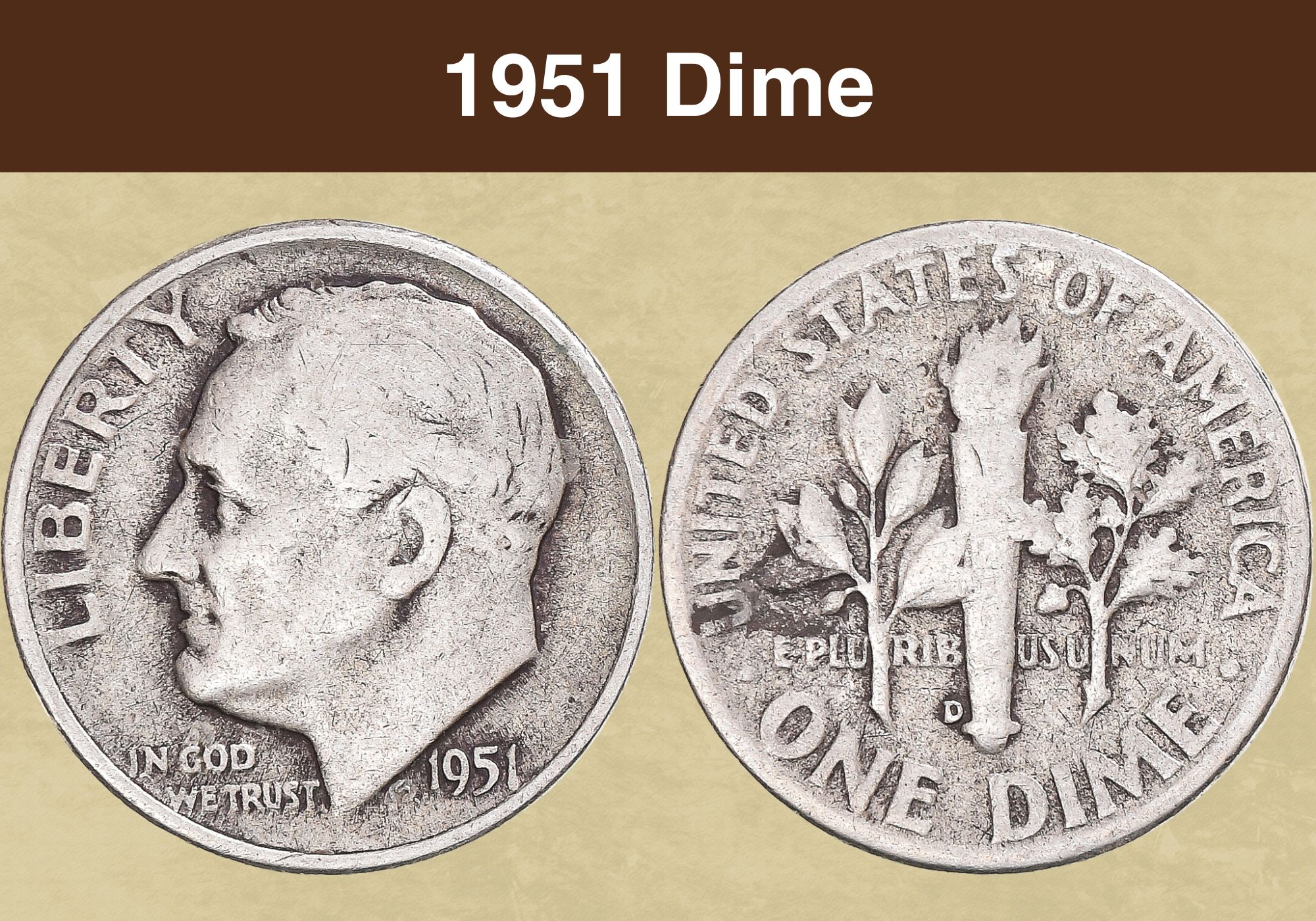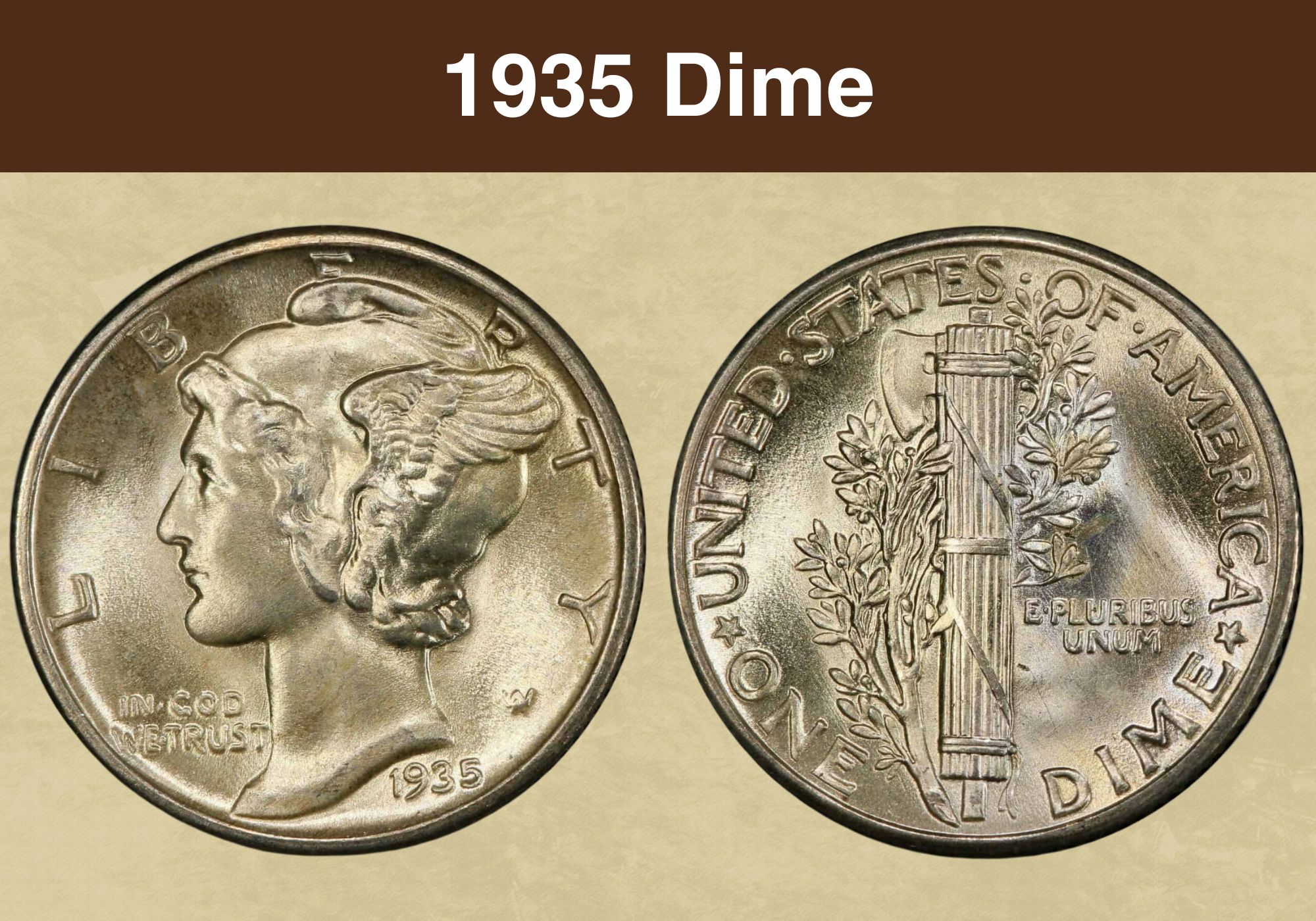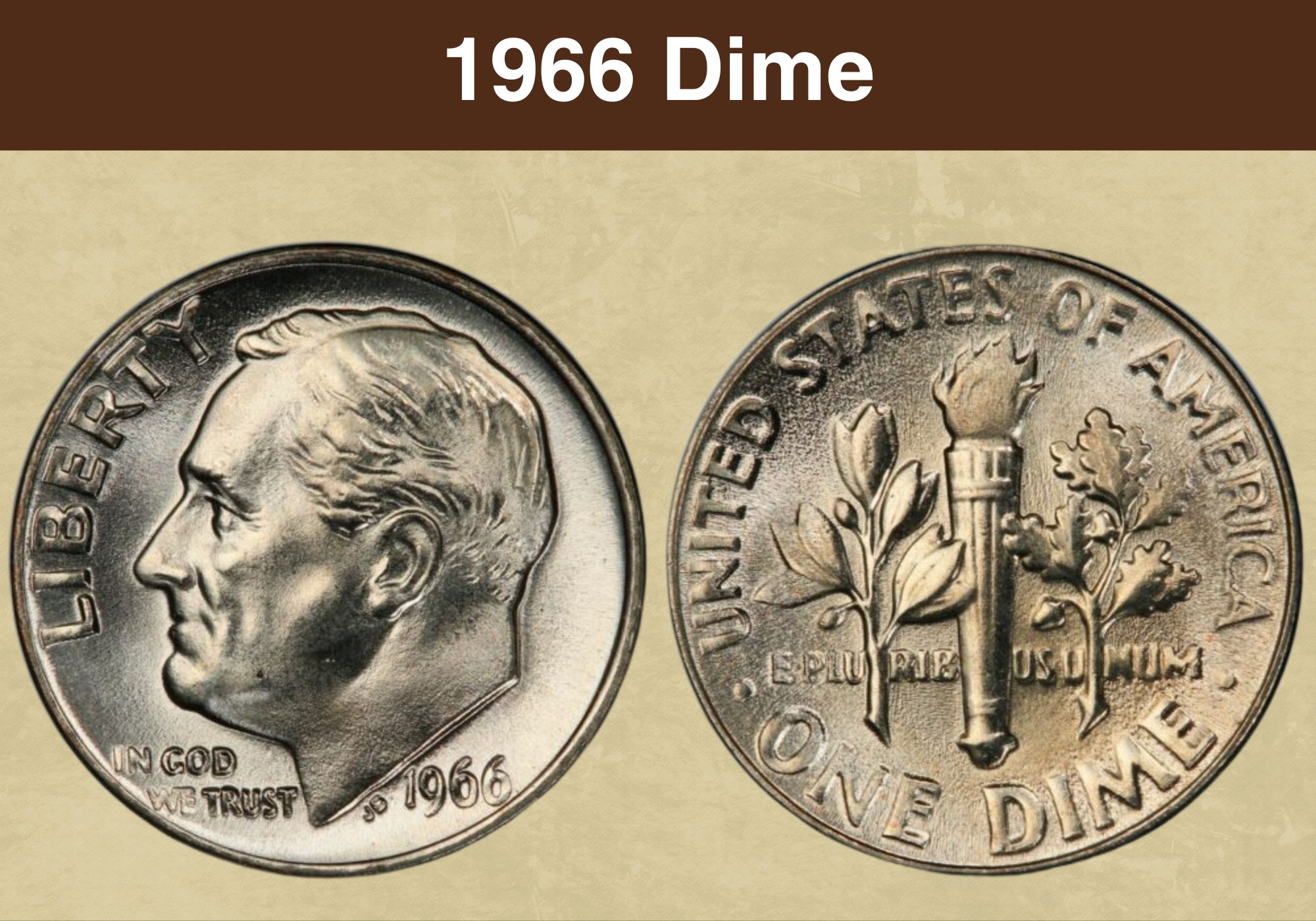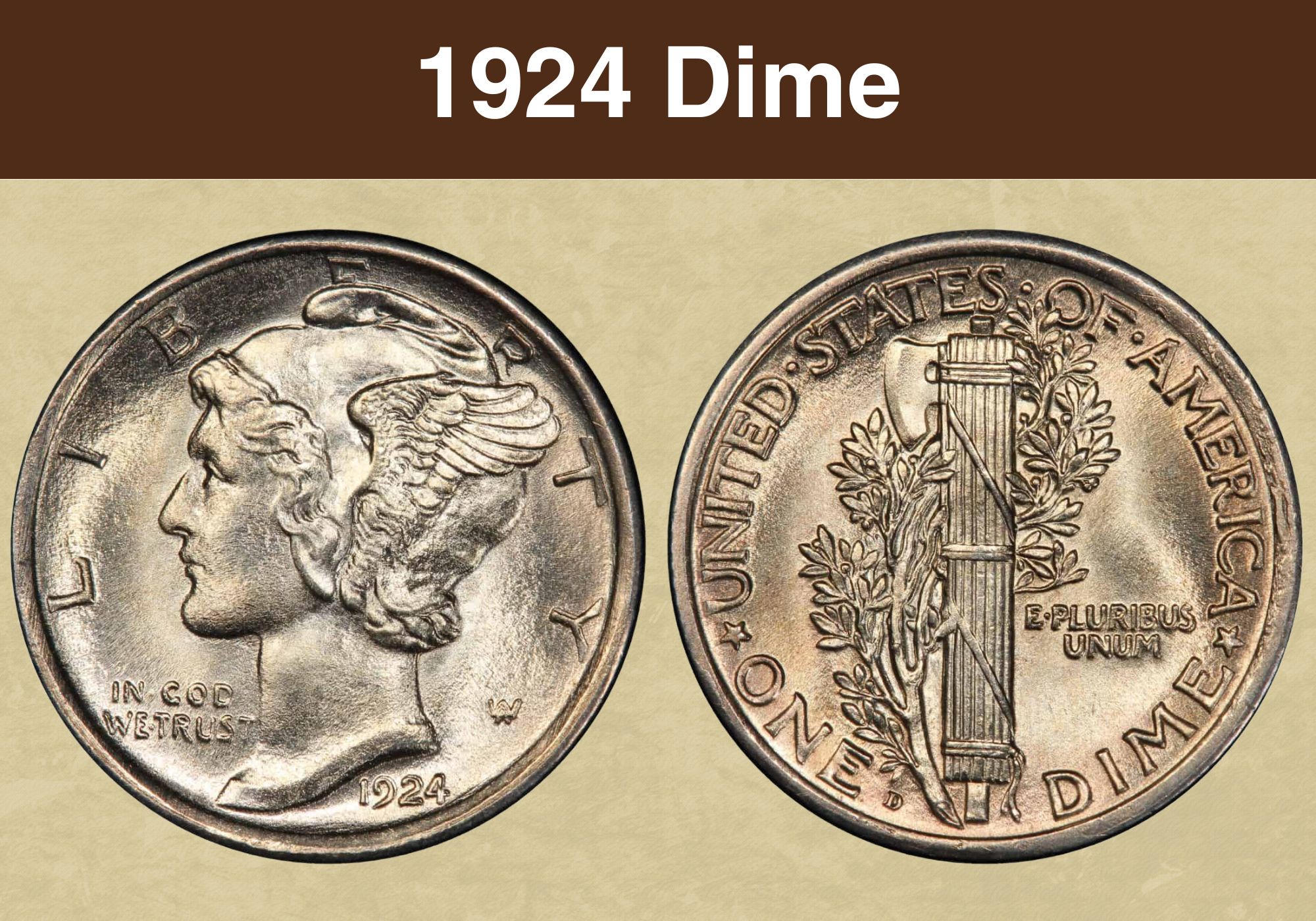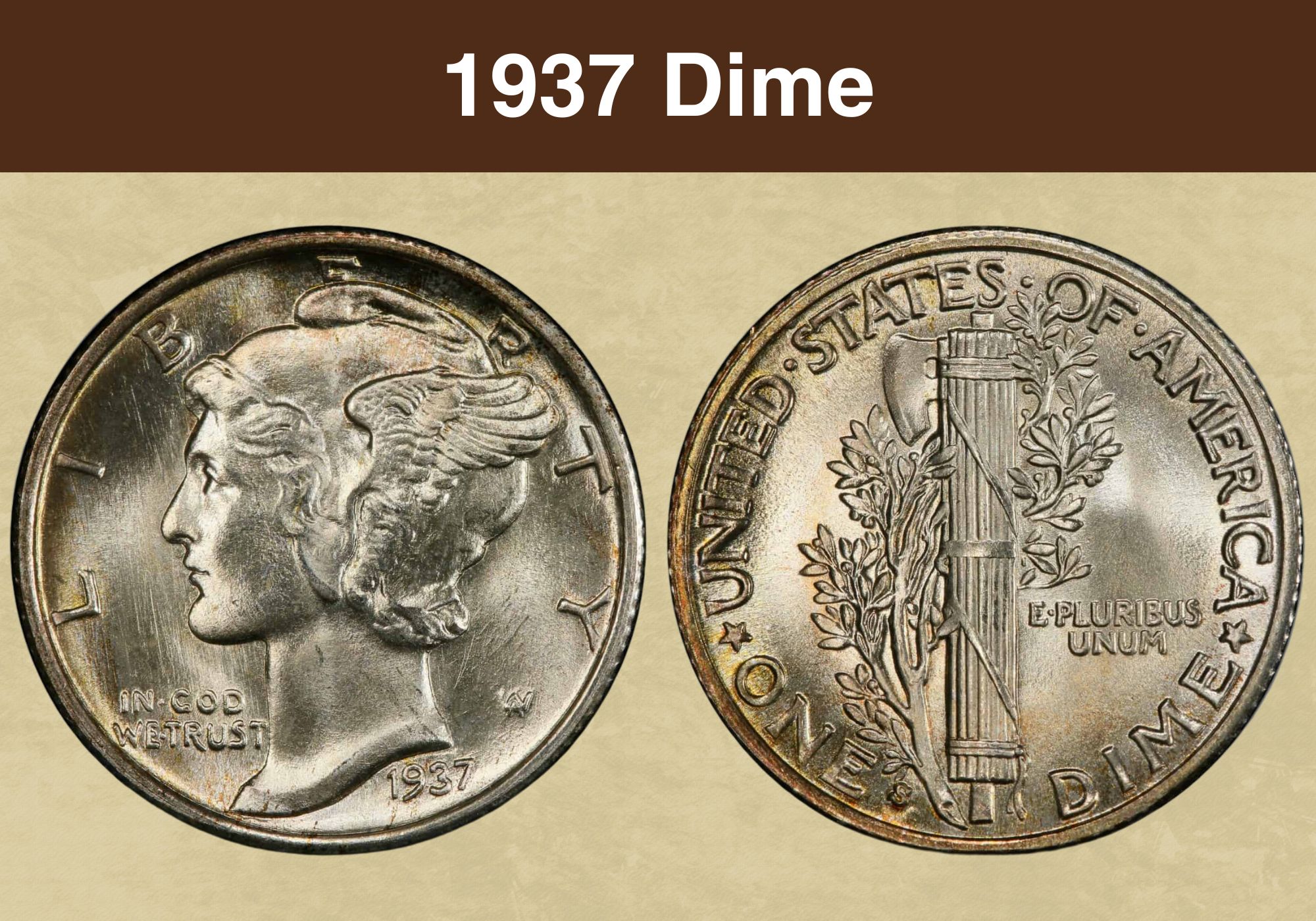
Coin Value Contents Table
Do you have a 1937 dime and would like to know its value? Some old coins are highly sought after by collectors and can sell for much more than their face value. Is the dime from 1937 one of these coins and how do you recognize valuable 1937 dimes?
Continue reading this article to find out what 1937 dimes can be worth and how to identify those that are the most valuable. We have also included a brief history of this interesting coin together with auction records achieved by the different varieties of the 1937 dimes.
1937 Dime Value Chart |
|||||
| Mint Mark | Very Good VG8 | Extra Fine EF40 | About Uncirculated AU50 | Uncirculated MS60 | Uncirculated MS65 |
| 1937 No Mint Mark Dime Value | $3.37 | $4.42 | $7.07 | $12 | $36 |
| 1937 D Dime Value | $3.37 | $5.39 | $12 | $25 | $53 |
| 1937 S Dime Value | $3.37 | $4.42 | $11 | $24 | $47 |
Dimes minted in 1937 were part of the series called Mercury Dimes. The Mercury dime replaced the Barber dime in 1916. The previous dime had been in circulation for 25 years and the US Mint wanted to replace it with a new design.
The United States Treasury Department decided they needed fresh ideas for the coin and as a result, artists were invited to submit their designs for the coin. In total, the Treasury received over fifty submissions. In the end, a design by Adolf Weinman featuring Lady Liberty was chosen as the winner.
Weinman had expected to collaborate with Charles Barber, who was the Chief Engraver at the US Mint at the time to complete the design and adapt it so it was suitable for minting. However, he ended up working on it alone as Barber’s time at the Mint ended.
Luckily, Weinman had previous experience in designing coins as well as medals. His previous work included the Walking Liberty half dollar, the Panama-Pacific Exposition commemorative coin, and the Congressional Gold Medal.
Also read: Top 17 Most Valuable Roosevelt Dimes Worth Money
1937 Dime Grading
Coins are graded using a scale that runs from one to seventy and is called the Sheldon scale. On this scale, the lower numbers are used for coins that are in poor or at best good condition and show various signs of wear and tear from circulation.
At the higher end, starting from sixty, are coins graded as mint state coins. These coins, despite being intended for circulation, have never been circulated and therefore remain in great condition. The highest grade, MS70, is only given for coins in perfect condition.
| # | Grade |
|---|---|
| 1 | Basal State-1 |
| 2 | Fair |
| 3 | Very Fair |
| 4, 5, 6 | Good |
| 7, 8, 10 | Very Good |
| 12, 15 | Fine |
| 20, 30 | Very Fine |
| 40 | Extremely Fine |
| 50 | About Uncirculated |
| 60 | Mint State |
| 65 | Mint State |
| 70 | Mint State |
Please check our grading guides to know your coin scale, It’s the necessary step to know the exact value of your coin.
Check out now: How to Grade Mercury Dime?
1937 No Mint Mark Dime Value
If you have a dime from 1937 and cannot see a mint mark on it, you have a coin that was minted in Philadelphia. While Denver and San Francisco minted dimes have the mint marks D and S respectively, Philadelphia minted coins are minted without a mint mark.
In 1937, the Philadelphia Mint produced significantly more dimes than the other two minting facilities. In total, 56,865,756 dimes were produced in Philadelphia. This represented almost 80% of all the dimes struck in 1937. Therefore, these coins are much easier to find than the other two mint varieties, and this is reflected in their valuations.
While there is no difference in the valuation of VG8-graded coins from the different mint facilities, you can notice the difference when moving up the scale. For example, an MS65-graded coin produced in Philadelphia is worth $36, while an S-minted dime is worth $47 and a D-minted dime is $53.
However, it is possible to sell 1937 no-mint mark dimes for a lot more than the average valuation. When you have the right coin and the right buyers present at an auction who are all after the same coin, prices can climb a lot higher. This happened in 2020 when an MS64 1937 no-mint mark dime sold for $1,800 at a Heritage Auctions.
The Obverse Details of the 1937 Dime
The obverse of the dime from 1937 has a portrait of Lady Liberty. She is facing left and wears a cap with wings. This is why the coin is sometimes called the ”Winged Liberty Silver Dime”. The wings were included in the design to symbolize freedom of thought.
Above the portrait, along the top rim, is the word LIBERTY, and below the portrait is the minting date, which is positioned slightly off-center to the right. The phrase IN GOD WE TRUST is in front of the portrait below Lady Liberty’s chin.
The Reverse Details of the 1937 Dime
The image on the reverse of the dime has a bundle of wood known as fasces. It is pictured standing up vertically and it is rods are tied together with three bands. The fasces symbolizes the strength and unity of the United States and the axe blade represents the power of the federal government.
Along the top rim, are the words UNITED STATES OF AMERICA and the denomination ONE DIME can be found below the fasces curving along the rim. The denomination and the country’s name are separated by a star on both edges of the coin. To the right of the fasces is the Latin motto E PLURIBUS UNUM.
Additional Features of the 1939 Dime
In 1939, the dime was still minted using an alloy with high silver content. The mix included 90% silver, and the rest was copper. The round coin has a smooth edge and weighs 2.5 grams. Its diameter is 17.9 millimeters, and it is 1.95 thick.
1937 Proof Dime
In 1937, the Philadelphia Mint also produced proof dimes. These are specially minted dimes that are produced to showcase the craftsmanship and design of the dime. These coins are not produced for circulation but are struck for collectors.
Proof coins are made using a special process where the coin is struck multiple times with specially polished dies to give them sharp, well-defined features and a mirror-like finish. There were only 5,728 proof coins produced in 1937, which makes them desirable for modern collectors. A PR65-graded coin is worth $598.
1937 D Dime Value
The Denver Mint produced 14,146,000 dimes in 1937, which is why they are not as easy to find as Philadelphia-minted dimes. Generally, the Denver minted coins command the highest prices among the 1937 mint varieties but even they are only valued at $53 when found at MS65.
To check if your 1937 dime was minted in Denver, look for the mint mark, a capital D, on the reverse of the coin. On the 1937 dime, it is to the left of the fasces, which is the bundle of rods with an axe blade.
Even though the 1937 D dimes are generally valued higher than either no mint mark or S-minted dimes from that year, the auction record for a Denver minted dime is lower than either of the other two. The auction record is $1,725, and it was achieved in 2007 at a Heritage Auctions sale. The coin was graded as MS68.
1937 S Dime Value
In 1937, the San Francisco Mint produced fewer dimes than the Philadelphia or Denver Mints. Only 9,740,000 S-minted dimes were released into circulation. Despite the low mintage, the coins are valued similarly to Philadelphia-minted coins across good and fine grades.
Across the higher grades, the 1937 S dimes are valued higher than the 1937 no-mint mark dimes but lower than the 1937 D dimes. However, the auction record is the highest among the different mint varieties. In 2018, at a Stack’s Bowers auction, an MS67+ graded 1937 S dime sold for $2,280.
Also read: Top 17 Most Valuable Mercury Dimes Worth Money
Rare 1937 Dime Error List
1937 Doubled Die Error
The dimes struck in 1937 are unusual since there are only a few notable errors known among them. One of the known errors is the doubled die error, of which there are two varieties on the dimes from 1937: on the designer’s initials or the date.
The designer’s initials “AW” are on the reverse of the 1937 dime, just below the olive branch on the left-hand side. The initials are quite small and can be difficult to see without magnifying the image, but they are present on all Mercury dimes minted from 1916 to 1945. Look for a doubling of the letters. On some 1937 dimes, the doubling effect is on the date instead of the initials.
Repunched Mintmark
When coins were minted in Denver or San Francisco, the mint mark was punched onto the coin by hand. Sometimes the first mint mark would end up in the wrong place or have the wrong orientation. The person would then punch it again, this time in the correct position. The result is a doubled or shifted mintmark.
Missing Bands
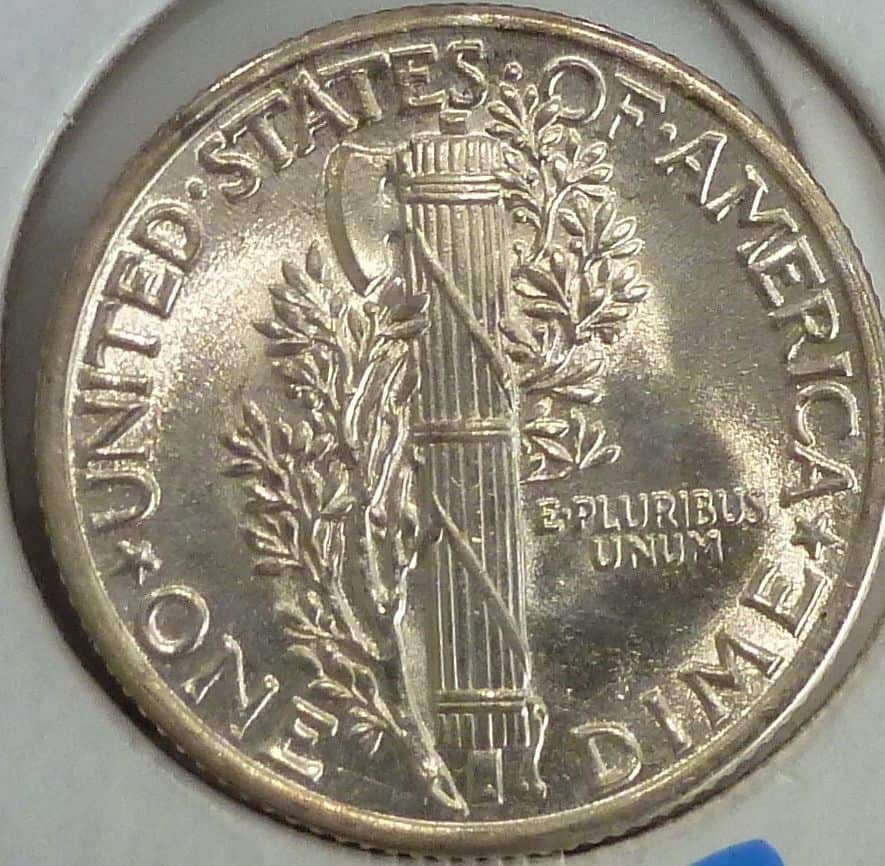
A Mercury dime with fully struck bands on the reverse of the coin can be more valuable than one with a missing band. There are supposed to be three bands tying the rods of wood together: one at the bottom, one in the middle, and one at the top. However, on some coins, one or even two of the bands are missing.
Off-Center Strike
This occurs when the coin is not centered properly during the striking process, resulting in a design that is off the center. The degree of off-centering can affect the value of the coin. Coins with a 50% off-center error with a fully visible date usually sell for the highest amounts.
Clipped Planchet
This error occurs when a portion of the coin is missing because of a problem with the blank planchet before it was struck. The severity of the error as well as the overall quality of the coin will determine the value of clipped planchet error coins.
It’s worth noting that some errors or variations that occur on the Mercury dimes can be subtle and may require a trained eye to identify. Additionally, the value of any coin will depend on several other factors, too, including its condition, rarity, and demand.
If you own a 1937 dime that you think may have an error or a valuable variation, it is best to have it examined by a reputable coin dealer or professional numismatist to determine its value.
Also read: 13 Most Valuable Dime Errors Worth Money
Where to Sell Your 1937 Dime ?
Now that you know the value of your coins, do you know where to sell those coins online easily? Don’t worry, I’ve compiled a list of these sites, including their introduction, pros, and cons.
Check out now: Best Places To Sell Coins Online (Pros & Cons)
1937 Dime Frequently Asked Questions
Where Does the Nickname Mercury Dime Come From?
Why are the dimes from 1937 often called the Mercury dimes even though there is no image of Mercury, the ancient Roman god, on the coin? The answer has to do with the winged cap Lady Liberty is wearing in the portrait.
The winged cap, which is known as petasus has often been associated with the god Mercury. He was believed to be a messenger of the gods and has often been depicted wearing a similar cap as Lady Liberty on the dime.
How much is a 1937 Lady Head dime worth?
The value of the Lady Head dime, also known as the Mercury dime or the Winged Liberty silver dime, depends on a range of factors. While circulated coins that are in good condition are worth upwards of $2.81 uncirculated dimes graded as MS65 sell between $36 and $53, depending on their mint mark.
As well as the mint mark, the value depends on the overall condition of the coin, its rarity, and demand. Coins sold at auctions where different collectors end up competing for them have occasionally sold well above the estimated prices.
Where is the mint mark on a 1937 Mercury Dime?
The mint mark on a 1937 Mercury dime is on the reverse of the coin, beneath the olive branch and just above the word “ONE.” There is no mint mark on dimes minted in Philadelphia. The Denver-minted coins can be identified by the letter D and San Francisco by the letter S.

